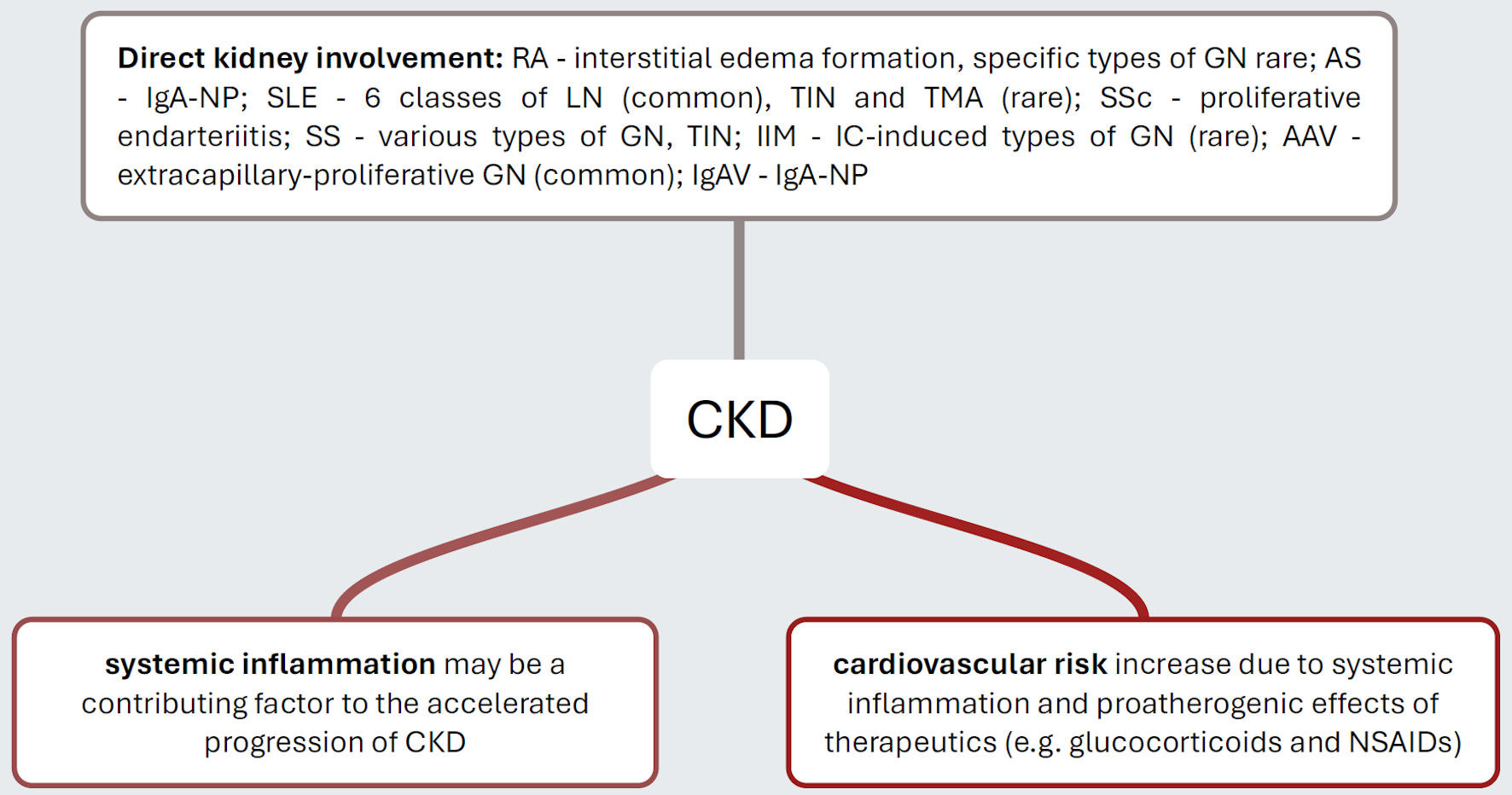Prevalence and Pathogenetic Mechanisms of Chronic Kidney Disease in Autoimmune-Mediated Systemic Diseases
DOI:
https://doi.org/10.14740/jocmr6271Keywords:
CKD, Rheumatic diseases, DMARD therapy, Cardiovascular risk, InflammationAbstract
Chronic kidney disease (CKD) affects an estimated 15% of all adults in Central Europe. Those affected are at high risk of cardiovascular disease and death. Inflammatory rheumatic systemic diseases manifest themselves extra-articularly with varying frequency. This article summarized the prevalence and pathogenetic mechanisms of CKD in rheumatic systemic diseases. The following databases were searched for references: PubMed, Web of Science, Cochrane Library, Scopus. The search period spanned from 1975 to 2025. Kidney involvement is almost always present in systemic lupus erythematosus and certain types of systemic vasculitis. In the context of rheumatic diseases, there are additional mechanisms that can contribute to enhancing the functional and structural integrity of the kidneys. These mechanisms include inflammation and an increase in cardiovascular risk. The prevalence of CKD is disproportionately high in certain entities of the rheumatic form. Given the disproportionately high prevalence of CKD in relevant entities of the inflammatory rheumatic group and the associated increase in the risk of cardiovascular disease and death, CKD screening should be an integral part of the care of affected patients.

Published
Issue
Section
License
Copyright (c) 2025 The authors

This work is licensed under a Creative Commons Attribution-NonCommercial 4.0 International License.









